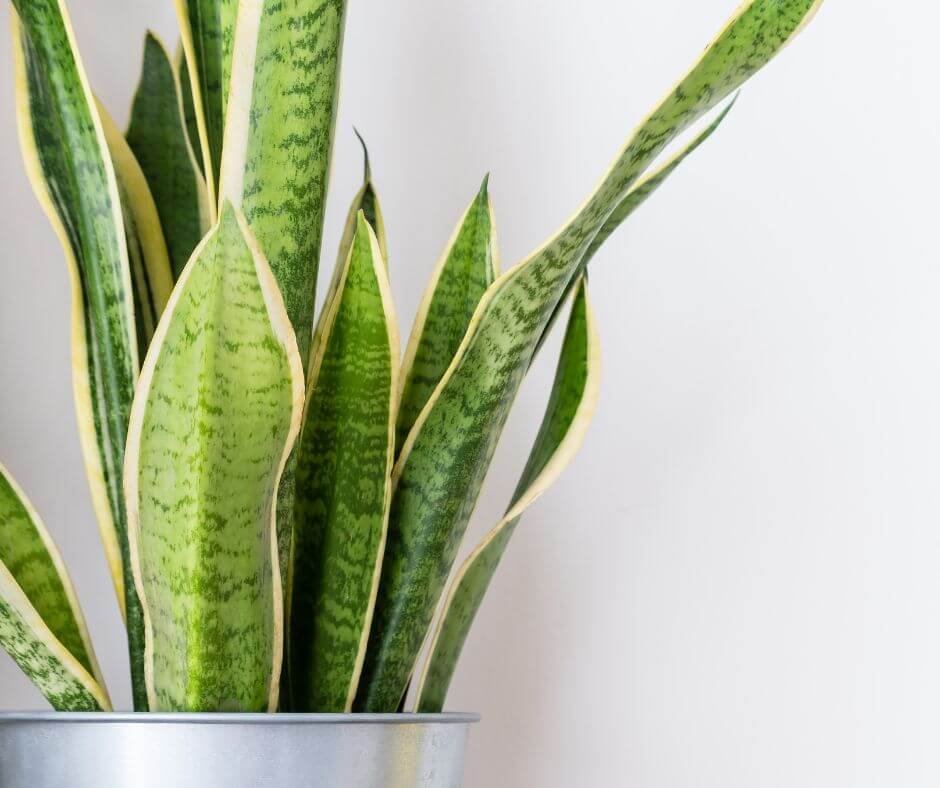The Best Guide To Snake Plant Leaves Turning Yellow
Table of ContentsThe 3-Minute Rule for Snake Plant Leaves Turning YellowSome Of Snake Plant Leaves Turning YellowSnake Plant Leaves Turning Yellow Can Be Fun For EveryoneEverything about Snake Plant Leaves Turning YellowSnake Plant Leaves Turning Yellow Things To Know Before You BuySome Known Details About Snake Plant Leaves Turning Yellow
If overwatering in snake plants is not dealt with, the yellow spots of your mother-in-law's tongue plant will certainly transform dark brownish or black. To rule out any other root causes of serpent plant fallen leave yellowing, remove the plant from its pot and examine the roots to see if they're soggy and have a nasty scent.
Here's just how to save a snake plant that's transforming yellow: Quit watering your serpent plant up until the dirt dries up entirely if the yellowing is because of overwatering. Return to watering, but not greater than when each week. As a regulation of thumb, avoid watering your snake plant until the top two inches of the soil really feel completely dry.
The Main Principles Of Snake Plant Leaves Turning Yellow
This will certainly aid to enhance drain rates, thinking about the high temperature level and sunlight conditions throughout the day. Correct drainage requires using a fast-draining soil mix and an expanding pot with drainage openings at the base. It is best to use a dirt mix that contains perlite and rugged sand for rapid drain.
There's a silver lining as you can expand new plants by propagating minority staying fallen leaves that are still healthy. References.

Likewise, insects, disease, overfeeding, absence of some nutrients, or being rootbound are possible causes. Allow us currently consider each of these causes. We mean to give you common signs connected with each factor and what to do. Water is crucial in absorbing nutrients required for chlorophyll. Additionally, absence of water creates the disintegration of chlorophyll (Snake Plant Leaves Turning Yellow).
The Best Strategy To Use For Snake Plant Leaves Turning Yellow
Without water, your plant can not soak up the mineral, some crucial for chlorophyll manufacture. Hence you might observe some yellowing or discoloration. Snake plants enjoy a wet, not soaked, and you should not permit the potting mix to dry completely for a very long time. We recommend sprinkling your snake plant after the soil dries completely or the majority of it is dry.
A significant one may cause overwatering, and if it is too tiny, your plants will certainly dry quickly. When watering, fill the soil until excess water comes from water drainage openings. Put any water that collects on the dish. Lastly, never adhere to a snake plant watering session. Rather, always feel to guarantee the potting mix is completely dry at the very least half-down the pot.

How Snake Plant Leaves Turning Yellow can Save You Time, Stress, and Money.
In warm summer seasons or throughout warmth waves, take your plants to cooler locations. Do not put your plants near house home heating system vents, radiators, fire places, or anything that produces warm.
Stunted growth is an additional indicator. It triggers enzymes associated with chlorophyll development. An absence will trigger in-between blood vessels yellowing on young fallen leaves. Likewise, there will certainly be sluggish growth and sunken tan spots on the yellowed areas. When it is lacking, plants collect nitrates yet fail to use them to make proteins.
Also though serpent plants have a document for being nearly impossible to eliminate, they however experience a reasonable share of problems. Snake Plant Leaves Turning Yellow. You are not the just one who has seen that your serpent plant's fallen leaves are transforming yellow. We will certainly analyze the factors snake plant leaves turn yellow and just how to deal with it
About Snake Plant Leaves Turning Yellow
Because serpent plants are prone to root rot, they will certainly not thrive if sprinkled exceedingly. This is commonly the perfect equilibrium if you let your plant dry out yet do not allow it stay completely dry. You can sprinkle your plant once again as quickly as the dirt appears dry to the touch.
A damp container will consider significantly larger than a dry pot, so eventually, you should certainly be able to determine exactly how dry your crop is based upon the mass of see here now its container. Serpent plant leaves may become yellow if you let your plant completely dry out, after that wait up until the dirt is completely dry prior to rewatering.
You need to consider greater than just how usually you water serpent plants. You likewise must consider what strikes the liquid when it is placed in the pot. After sprinkling your plant, you need to not let the roots linger in water for a few days due to the fact that this can trigger origin rot.
Fascination About Snake Plant Leaves Turning Yellow
Yellowing leaves can be dealt with by offering the serpent plant the appropriate surroundings and focus. Below are some of the factors snake plants transform yellow and soft.
You just need to supply enough supply and make sure appropriate drainage to permit the additional water to drain out. Not way too much neither insufficient; there will certainly be an ideal atmosphere for fungi ailments if there is any kind of standing water. The serpent plants can be sprinkled every 2 to 6 weeks.
After putting them in the early morning sunlight, you will observe that snake plants' growth rate would certainly increase and show up much healthier. Nevertheless, placing them in the outdoor morning sunshine will require much more water, so once each week is sufficient. If the location useful site receives extreme sunlight and the surface feels completely dry, you can sprinkle them twice per week.